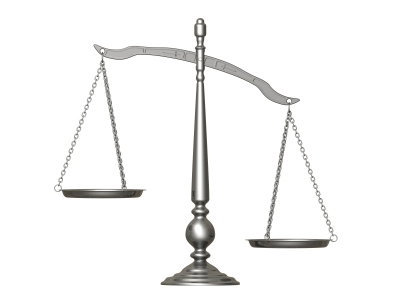 An investigation reveals that Politico has indeed given more weight to Solyndra in its coverage.Like it or not, Politico drives morning chatter in Washington, D.C. Subject matter tip sheets are emailed every weekday morning. I subscribe to Morning Energy, “sponsored by America’s Natural Gas Alliance,” which lately has seemed like All Solyndra, All The Time. While Republicans want Solyndra to be an excuse to shut down all renewable energy stimulus, Democrats have been fuming at the amount of ink and pixels devoted to a non-scandal. About a week ago, I started tweeting the number of times Morning Energy mentioned Solyndra, comparing it to the number of times the same outfit has mentioned the growing evidence of a culture of cronyism, if not outright corruption, within the State Department’s task of approving the Keystone XL pipeline.
An investigation reveals that Politico has indeed given more weight to Solyndra in its coverage.Like it or not, Politico drives morning chatter in Washington, D.C. Subject matter tip sheets are emailed every weekday morning. I subscribe to Morning Energy, “sponsored by America’s Natural Gas Alliance,” which lately has seemed like All Solyndra, All The Time. While Republicans want Solyndra to be an excuse to shut down all renewable energy stimulus, Democrats have been fuming at the amount of ink and pixels devoted to a non-scandal. About a week ago, I started tweeting the number of times Morning Energy mentioned Solyndra, comparing it to the number of times the same outfit has mentioned the growing evidence of a culture of cronyism, if not outright corruption, within the State Department’s task of approving the Keystone XL pipeline.
In response to grumbling such as mine, Politico’s Darren Samulsohn has labeled those of us who see Keystone XL as a bigger issue the “left,” presumably in contrast with the ever-so-reasonable “center,” who care only about Solyndra. He writes:
Liberals and environmental activists desperately trying to change the narrative away from Solyndra are simultaneously working to throw the White House and Secretary of State Hillary Clinton under the bus with another energy trouble spot.
The Nation, The Huffington Post, Daily Kos, Grist, Climate Progress and Media Matters have run editorials and articles in recent weeks bemoaning the “out of proportion” Solyndra coverage and drawing attention to the State Department’s pending review of the Keystone XL crude oil pipeline that would connect Canada’s Tar Sands to the Gulf Coast.
But which so-called scandal gets more media coverage? Is Politico skewing the chatter? I decided to compare Politico’s coverage of Solyndra with its coverage of the State Department’s Keystone XL approval process.
As background for anyone not already up on the “allegedly scandalous behavior” permeating the Keystone XL process, Friends of the Earth has been leading with Freedom Of Information Act requests and has a definitive collection of news. The New York Times has also written on questions of conflict in the pipeline approval process, drawing in part on work by Friends of the Earth and other environmental groups. Conflicts of interest generally center around two facts: a very cozy relationship between Clinton-aide-turned-TransCanada-lobbyist Paul Elliott and State Department employee Missy Verloop, and the fact that the State Department outsourced its environmental impact statement to a TransCanada associate, Cardno Entrix.
For methodology on Politico stories, I searched the Politico website for “Solyndra,” which, as of Oct. 20, returned 85 hits. I counted stories that fed into the narrative that Solyndra is a scandal. I planned to count separately stories that questioned whether Solyndra is a scandal. And I ignored stories that simply mentioned Solyndra in passing, such as this one, and opinion pieces, such as this one. A lot of reporting on the budget showdown of late September included mentions of Solyndra; I counted only the ones that mentioned it as a political problem for the White House, such as this one, but didn’t count stories mentioning its bankruptcy as a fact without any political overtones, such as this one. Similarly, I searched the Politico website for “keystone,” which returned 111 hits, and first sorted out 29 mentions of the Keystone pipeline from 82 mentions of the Keystone State, Keystone Kops, Keystone Beer, and the like. I also ran searches for “TransCanada,” “Verloop,” and “Cardno,” but didn’t turn up any additional hits.
I separately went through the Morning Energy archives from Aug. 22, 2011, to Oct. 20, 2011. For this, recognizing the role of Morning Energy in driving conversations, I used a slightly different methodology: I counted mentions, whether they fed or discredited the narrative of each as a scandal, or were simply netural. I included links to other news reports, but didn’t include anything simply listed as part of the day’s agenda. And I saved everything in a Google Docs spreadsheet for review by anyone who’s interested.
The data showed, very strongly, that Politico has determined Solyndra, but not Keystone XL, to be a scandal.
A total of 57 of the 85 stories, or 67 percent, reported on the Solyndra “scandal,” assumed that it was a scandal, and/or fed into the narrative of “Solyndra = scandal.” An additional five stories reported on Democrats’ efforts to go on offense, push back, or otherwise brush off the “Solyndra as scandal” narrative. Politico has not run any stories questioning whether Solyndra constitutes a scandal.
A total of one of the 29 Keystone stories reported on the cozy relationship between Elliott and Verloop, and another one (single solitary) story, published the same day, rebutted environmentalists’ efforts to paint the Elliott-Verloop relationship as a scandal. Additionally, one (the loneliest number) of the 29 Keystone stories reported on Sen. Bernie Sanders’ (D-Vt.) meeting with the State Department in response to concerns arising from a New York Times article showing that Cardno Entrix was a major client of TransCanada. (Note the difference between concerns arising from facts and concerns arising from other newspapers’ reporting on facts.) That’s a total of two stories, or 6.8 percent of the Keystone XL coverage, reporting the existence of a scandal.
The Morning Energy column had 95 mentions of Solyndra over the course of 35 days (since the bankruptcy), or an average of 2.7 mentions per day. By contrast, Keystone XL was mentioned 37 times over 44 days (since the protests in late August), or an average of 0.84 mentions per day.
There’s a larger question here. What constitutes a scandal?
Are salacious facts required for a scandal? Media Matters compared coverage of Solyndra with coverage of a genuine, hookers-and-graft scandal at the former Minerals Management Service, only to find that Solyndra coverage far outweighed coverage of the MMS scandal. David Roberts points out that not only is Solyndra not a scandal, but the mainstream media have quietly found no evidence of wrongdoing: “Despite the fact that the Solyndra affair is ‘brewing’ and ‘ballooning’ and ‘playing out as a scandal,’ the fact remains that no wrongdoing has been uncovered.”
Does popular opinion make a scandal? Polls show that the American public doesn’t much know or care about Solyndra, but they still support clean energy by large margins. A friend deep in the heart of Texas tweeted that none of her coworkers knew anything about it, except for the one who thought Solyndra was a rock band. Climate Progress has dubbed Solyndra the royal wedding of energy stories for its sheer breathless hype. But the hype hasn’t sunk in among the American people.
Rather, Solyndra is being promoted by the self-referential Beltway cycle of which Politico is an essential part. The elite media, not the American public or what Darren Samuelsohn considers the left, determine whether something is a scandal or isn’t.
So far, the Solyndra “scandal” is playing out exactly as the Whitewater and Vince Foster scandals did during the Clinton era: allegations requiring much frenzied reporting, only to be found much later on to be lacking any substance at all.
It’s facile to assume that Politico simply has a right-wing bias — it only determines that something is a scandal if Republicans say it’s so. Evidence includes the fact that Morning Energy is sponsored by America’s Natural Gas Alliance, and Political Playbook is sponsored by the American Petroleum Institute.
In addition to the fossil-fueled sponsorships, a second factor may be affecting coverage. In a fast-moving media world where the emphasis is on “winning the morning,” journalists can become stenographers, regurgitating what’s fed to them by lobbyists and staffers with agendas. They don’t have the luxury of time in which to do critical thinking. Here, two groups of people — Republicans and fossil-fueled lobbyists — have strong desires to destroy Obama’s political and policy agendas. They’re drawing out the Solyndra “scandal” long after it’s become obvious that there was no wrongdoing, just business miscalculations. They’re using Politico and other outlets, and Politico is only too happy to oblige in the name of page views.




